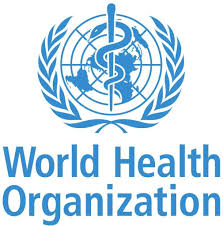HWN Jobs
- ULTIDENT MEDICAL DIAGNOSTICS JOBS
- HEALTH CLUB MANAGER JOBS AT INTERCONTINENTAL HOTELS
- MAGODO SPECIALIST HOSPITAL LIMITED (9 SLOTS) JOBS
- JBC PHARMACY 2016 JOBS
- CONCERN UNIVERSAL (5 SLOTS) JOBS
HWN Blogs
- Classical heart healthy foods on HWN BLOGS
- Classical Warning Signs When The Human Liver Begins To Fail on HWN BLOGS
- Myths About Hygiene, Soaps, Germs, Sweat and Smell on HWN BLOGS
- Hernia does not heal on its own on HWN BLOGS
- Classical Essential Oils That Improves Focus Cum Memory on HWN BLOGS
news - 92 percent of the worlds population lives in places with bad air quality on HWN INSIGHTS back to all News
92 percent of the worlds population lives in places with bad air quality on HWN INSIGHTS

Some 3 million deaths a year are linked to exposure to outdoor air pollution. Indoor air pollution can be just as deadly. In 2012, an estimated 6.5 million deaths (11.6% of all global deaths) were associated with indoor and outdoor air pollution together.
Nearly 90% of air-pollution-related deaths occur in low- and middle-income countries, with nearly 2 out of 3 occurring in WHO’s South-East Asia and Western Pacific regions.
Ninety-four per cent are due to noncommunicable diseases – notably cardiovascular diseases, stroke, chronic obstructive pulmonary disease and lung cancer. Air pollution also increases the risks for acute respiratory infections.
Air pollution continues take a toll on the health of the most vulnerable populations – women, children and the older adults, adds Dr Bustreo. "For people to be healthy, they must breathe clean air from their first breath to their last.
Major sources of air pollution include inefficient modes of transport, household fuel and waste burning, coal-fired power plants, and industrial activities. However, not all air pollution originates from human activity. For example, air quality can also be influenced by dust storms, particularly in regions close to deserts.
The interactive maps provide information on population-weighted exposure to particulate matter of an aerodynamic diameter of less than 2.5 micrometres (PM2.5) for all countries. The map also indicates data on monitoring stations for PM10 and PM2.5 values for about 3000 cities and towns.
Fast action to tackle air pollution can’t come soon enough, adds Dr Neira. "Solutions exist with sustainable transport in cities, solid waste management, access to clean household fuels and cook-stoves, as well as renewable energies and industrial emissions reductions.
Notes for editors:
WHO air quality model confirms that 92% of the world’s population lives in places where air quality levels exceed “WHO’s Ambient Air quality guidelines” for annual mean of particulate matter with a diameter of less than 2.5 micrometres (PM2.5). WHO guideline limits for annual mean of PM2.5 are 10 μg/m3 annual mean.
PM2.5 includes pollutants such as sulfate, nitrates and black carbon, which penetrate deep into the lungs and in the cardiovascular system, posing the greatest risks to human health.
BreatheLife air pollution campaign
<div class="\\"_1mf" _1mj\\"="" data-offset-key="\\"e6imr-0-0\\""> Source: WHO, HWN AFRICA.
: 2016-10-01 05:14:22 | : 1356
HWN News
- First Polish infant to survive on extreme dialysis on HWN MEDICAL MIRACLES
- Drug resistant tuberculosis end game on HWN INSIGHTS
- Too many women opting for caesarean sections (CS) to give birth on HWN SEX EDU
- The intelligent, strong and fearless Nurse that conquered Ebola on HWN ARCHIVE
- Medhi Benatia, down with injury on HWN SPORTS






